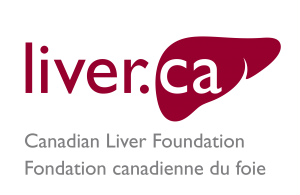Gilbert’s Syndrome
Gilbert’s Syndrome
Gilbert’s syndrome is a fairly common, mild liver disorder that is caused by an inherited deficiency of an enzyme involved in the metabolism of bilirubin. In people with Gilbert’s syndrome, the bilirubin is typically mildly elevated and often fluctuates. At times, it may be within the normal range whereas at other times, the level may be higher than normal, but not dangerously so.
What is bilirubin and how is it metabolized?
Small amounts of bilirubin are normally present in the blood. Bilirubin is produced from the natural breakdown of hemoglobin (the red pigment of red blood cells) in bone marrow, the spleen, and other organs. It is carried to the liver in the blood where it undergoes a series of chemical changes and is excreted into the bile. It undergoes further chemical changes within the intestine, and from there passes out of the body. However, when red blood cells break down excessively (called hemolysis) or there is interference in the normal processes for bilirubin metabolism or bile excretion, the amount of bilirubin increases. High levels of bilirubin in the blood may produce jaundice (a yellow discoloration of the skin and/or eyes), and in the urine may produce a tea-coloured appearance.
Who is at risk?
Gilbert’s syndrome is an inherited disorder. It is estimated that between three to seven per cent of all adults have Gilbert’s syndrome. It is much more common in males, and usually first appears when people are in their teens or early adulthood (20s and 30s).
Symptoms
Most patients with Gilbert’s syndrome have no symptoms. However, some people may develop mild jaundice, and the whites of the eyes may be yellow. Others report non-specific complaints (e.g. fatigue, weakness and abdominal pain), however, it is unclear whether these symptoms are directly related to higher levels of bilirubin.
Diagnosis
Often Gilbert’s syndrome is diagnosed by chance when blood is examined for another reason. Specifically, the serum bilirubin is found to be elevated whereas the other liver tests are usually normal. Serum bilirubin may increase with fasting or during another illness such as influenza. To avoid misdiagnosis, the physician must distinguish between this benign disorder and other more serious causes of elevated bilirubin levels.
The diagnosis can usually be made by clinical history, physical examination, and blood tests.
Treatment
Gilbert’s syndrome does not require treatment. People with the disorder lead normal, healthy lives.
Support
National Help Line:
This support resource gives you and your loved one somewhere to turn for answers after diagnosis, helps you understand your disease, and provides you with the resources you need. You can call 1 (800) 563-5483 Monday to Friday from 9 AM to 5 PM EST.
The Peer Support Network:
This is a national network of people living with liver disease that have offered to share their experiences with others. It was developed by the Canadian Liver Foundation as a means to link Canadians like you who have a family member who has liver disease, who care for someone who suffers from liver disease, or who have been diagnosed with a liver disease, to talk about your concerns with a peer in a similar situation.
If you would like to be connected with a Peer Supporter in your area, or would like to join the Peer Support Network, please fill out the Peer Support Network Sign-up Form.
Help us help you!
If you are not satisfied with the information you just read or any information on our website, please take a moment to send us your comments and suggestions on the type of content you would like to find on liver.ca. Please include the page you are commenting about in the subject line of your email.



